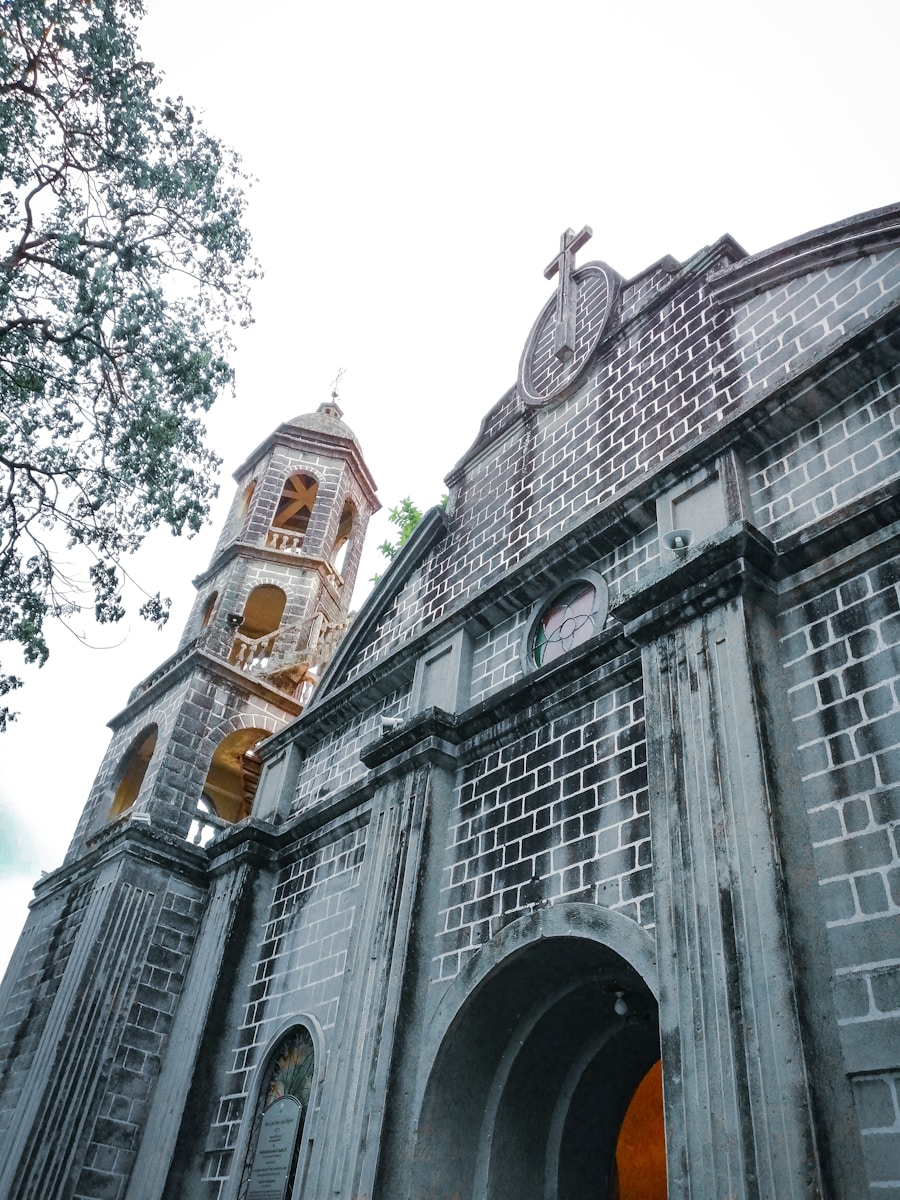Download links
How to install Restoring Glory: Manila Cathedral's Historic Renovation APK?
1. Tap the downloaded Restoring Glory: Manila Cathedral's Historic Renovation APK file.
2. Touch install.
3. Follow the steps on the screen.
Description
The Manila Cathedral, officially known as the Cathedral-Basilica of the Immaculate Conception, stands as a testament to the rich historical and cultural tapestry of the Philippines. Its origins trace back to the Spanish colonial period, with the first structure built in 1581. This initial edifice was a modest wooden chapel, serving as the seat of the Archdiocese of Manila.
Over the centuries, the cathedral has undergone numerous reconstructions and renovations, reflecting the evolving architectural styles and the resilience of the Filipino people in the face of natural disasters and historical upheavals. The cathedral has been rebuilt several times due to calamities, including earthquakes and fires. The most significant of these events occurred in 1863 when a devastating earthquake destroyed the original structure.
The subsequent reconstruction was led by architect Francisco de la Cruz, who introduced neo-Romanesque elements to the design. The cathedral was again damaged during World War II, leading to another major reconstruction effort that was completed in 1958. Each iteration of the cathedral not only reflects the architectural trends of its time but also embodies the spiritual and cultural significance of the Catholic faith in the Philippines, making it a central landmark in Manila.
Key Takeaways
- Manila Cathedral has a rich history dating back to the Spanish colonial period, with the current structure being the eighth iteration of the cathedral.
- The need for renovation arose due to damage caused by natural disasters, as well as wear and tear from age and heavy foot traffic.
- The renovation process involved extensive planning, fundraising, and coordination with experts in architecture and conservation.
- Challenges faced during renovation included funding shortages, logistical issues, and the delicate task of preserving the cathedral’s historical and cultural significance.
- The renovation has had a positive impact on the cathedral, restoring its structural integrity and enhancing its aesthetic appeal, attracting more visitors and worshippers.
- Future plans for Manila Cathedral include continued maintenance and preservation efforts, as well as potential expansion and modernization projects to ensure its longevity and relevance.
The need for renovation
As time progressed, the Manila Cathedral began to show signs of wear and tear, necessitating a comprehensive renovation. The structural integrity of the building was compromised due to various factors, including environmental conditions, pollution, and the sheer passage of time. The cathedral’s façade, once a symbol of grandeur, had begun to fade, with cracks appearing in its walls and deterioration evident in its intricate details.
This decline not only posed a risk to the safety of visitors but also threatened to diminish the cathedral’s status as a vital cultural and religious site. Moreover, the growing number of visitors highlighted the need for modernization. The influx of tourists and pilgrims seeking to experience the spiritual ambiance of the cathedral necessitated improvements in facilities and accessibility.
The lack of adequate visitor amenities, such as restrooms and information centers, became increasingly apparent. Additionally, there was a pressing need to enhance safety measures to protect both the structure and its visitors. Thus, a renovation plan was deemed essential not only to preserve the historical integrity of the cathedral but also to ensure that it could continue to serve its community effectively.
The renovation process

The renovation process for Manila Cathedral was meticulously planned and executed, involving a collaboration between architects, historians, and conservationists. The primary goal was to restore the cathedral to its former glory while ensuring that modern safety standards were met. The project began with a thorough assessment of the building’s condition, which included structural evaluations and historical research to understand the original design intentions.
This phase was crucial in determining which elements could be preserved and which required replacement or enhancement. One of the most significant aspects of the renovation was the restoration of the cathedral’s façade. Craftsmen worked diligently to repair and clean the stonework, removing decades of grime and pollution that had accumulated over time.
The intricate sculptures and reliefs that adorned the exterior were carefully restored, ensuring that their original artistry was preserved for future generations. Inside, modern lighting systems were installed to highlight the cathedral’s stunning stained glass windows while maintaining an atmosphere conducive to worship. The renovation also included improvements to accessibility, such as ramps for individuals with disabilities, ensuring that everyone could experience this historic site.
Source: Manila Cathedral
Challenges faced during renovation
| Challenges Faced | Frequency |
|---|---|
| Unforeseen structural issues | 25 |
| Delays in material delivery | 18 |
| Coordination issues with contractors | 12 |
| Budget overruns | 20 |
The renovation of Manila Cathedral was not without its challenges. One of the primary obstacles encountered was balancing preservation with modernization. While there was a strong desire to restore the cathedral’s historical features, there was also an urgent need to incorporate modern amenities that would enhance visitor experience without compromising the building’s integrity.
This delicate balance required extensive discussions among stakeholders, including church officials, architects, and conservationists. Additionally, logistical challenges arose during construction. The cathedral is located in a bustling area of Manila, making it difficult to manage traffic and ensure safety for both workers and visitors.
Weather conditions also played a role; heavy rains during certain periods delayed progress on exterior work. Despite these hurdles, the dedication of those involved in the renovation ensured that each challenge was met with innovative solutions and unwavering commitment.
Impact of the renovation
The impact of the renovation on Manila Cathedral has been profound and multifaceted. First and foremost, it has revitalized a key historical landmark that serves as a focal point for both religious activities and cultural heritage in Manila. The restoration has drawn increased attention from both locals and tourists alike, leading to a resurgence in visitors eager to experience its beauty and significance.
This influx has not only benefited the cathedral but has also positively impacted local businesses in the surrounding area. Moreover, the renovation has fostered a renewed sense of pride among Filipinos regarding their cultural heritage. The cathedral stands as a symbol of resilience and continuity amidst changing times, reminding people of their shared history and faith.
Community engagement during the renovation process also played a crucial role; local artisans were often employed for restoration work, ensuring that traditional skills were passed down through generations. This connection between past and present has strengthened community ties and encouraged greater appreciation for local craftsmanship.
Future plans for Manila Cathedral

Education and Cultural Enrichment
One significant initiative is to create educational programs that focus on the history and architecture of the cathedral. These programs would target schools and community groups, fostering a deeper understanding of not only the cathedral itself but also its place within Philippine history.
Community Outreach and Social Cohesion
Additionally, there are discussions about expanding outreach programs that would allow for greater community involvement in church activities. This could include hosting cultural events that celebrate Filipino traditions or organizing interfaith dialogues that promote understanding among different religious groups. Such initiatives would not only enrich the spiritual life of the cathedral but also position it as a hub for social cohesion in an increasingly diverse society.
A Bright Future Ahead
In conclusion, while Manila Cathedral has undergone significant renovations to preserve its historical integrity and enhance visitor experience, its future remains bright with plans aimed at fostering community engagement and education. As it continues to stand as a beacon of faith and culture in Manila, it will undoubtedly adapt to meet the needs of future generations while honoring its storied past.
If you are interested in exploring more about Manila Cathedral, you may also enjoy reading about the history and significance of the church in this article here. This article delves into the architectural beauty and cultural importance of Manila Cathedral, providing a deeper understanding of its role in Filipino history and society.
FAQs
What is the Manila Cathedral?
The Manila Cathedral, also known as the Metropolitan Cathedral of the Immaculate Conception, is a Roman Catholic basilica located in the Intramuros district of Manila, Philippines.
When was the Manila Cathedral built?
The original Manila Cathedral was built in 1581, but it has been destroyed and rebuilt several times due to natural disasters and wars. The current structure was completed in 1958.
What is the architectural style of the Manila Cathedral?
The Manila Cathedral features a combination of architectural styles, including Baroque, Neo-Romanesque, and Neo-Byzantine influences.
What is the significance of the Manila Cathedral?
The Manila Cathedral is a significant religious and cultural landmark in the Philippines. It has been the site of many important events in the country’s history, including the papal visits of Pope Paul VI, Pope John Paul II, and Pope Francis.
Is the Manila Cathedral open to the public?
Yes, the Manila Cathedral is open to the public for worship, prayer, and guided tours. Visitors are welcome to explore the cathedral’s interior and learn about its history and significance.





